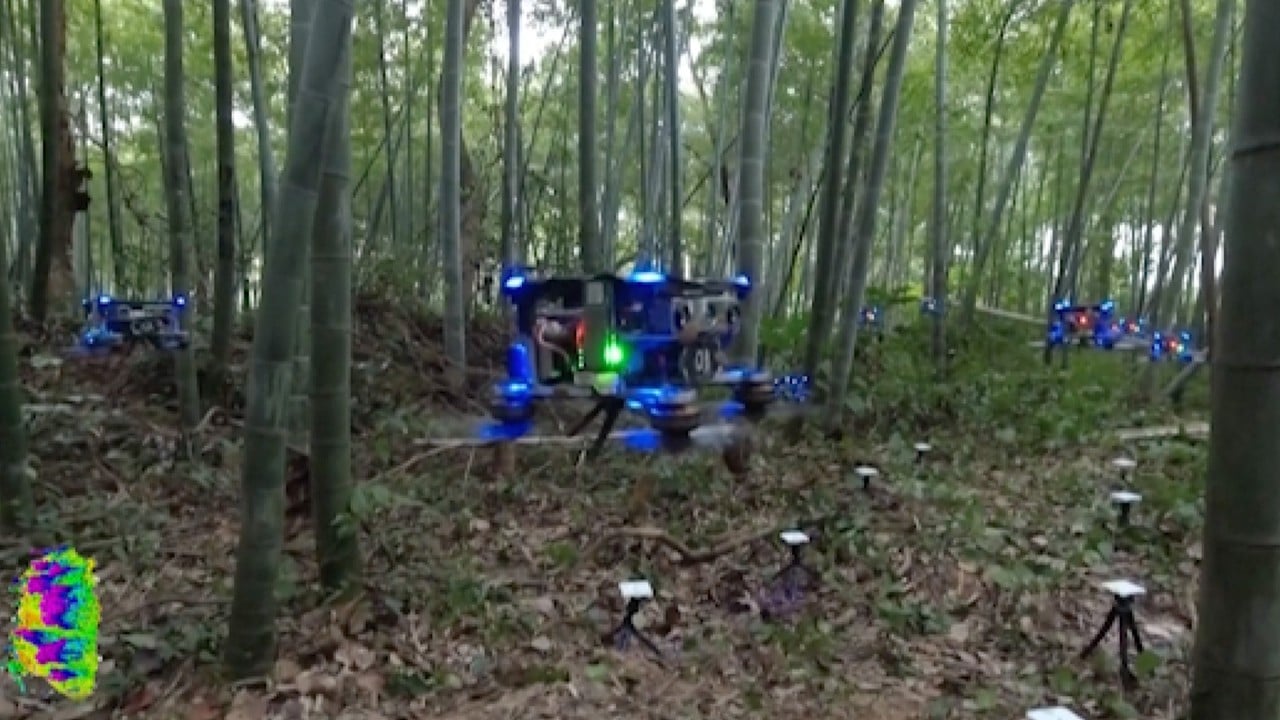
01:35
Chinese firm obtains country's first passenger-drone production certificate
China clears first eVTOL aircraft for production as ‘low-altitude economy’ takes wing
- First production licence in China has been issued for an electric vertical take-off and landing vehicle, a major step for the country’s ‘low-altitude economy’
- Industries centred around activities within 1,000 metres of sea level, particularly flight, projected to reach trillions of yuan in value by 2030
China has issued its first production licence for electric vertical take-off and landing (eVTOL) aircraft, further solidifying its position in the global race to broaden commercial applications and win market share in the up-and-coming tech-driven sector.
The EH216-S, an unmanned eVTOL aircraft capable of transporting passengers, received a production certificate from the Civil Aviation Administration of China (CAAC) on Sunday, according to a social media post from the aircraft’s manufacturer EHang. The craft obtained its type and standard airworthiness certificates – both required for commercial operations – from the CAAC last year.
The licensure marks a breakthrough in China’s multipronged effort to bolster what it calls the “low-altitude economy”, a wide range of industries related to manned and unmanned vehicles operating below an altitude of 1,000 metres.
As China intensifies its presence in civil aviation to break the long-standing duopoly of US-based Boeing and European multinational Airbus – a daunting task, considering the domestic industry’s relative infancy and the battery of trade restrictions any tech-intensive field is bound to encounter – the newer and more open low-altitude arena, driven by wide adoption of eVTOL aircraft and unmanned aerial vehicles, presents a less arduous path for China to become a world leader.
In particular, the scale of China’s eVTOL industry reached 980 million yuan in 2023 – a year-on-year increase of 77.3 per cent – and is projected to reach 9.5 billion yuan in value by 2026.
Cities across the country have rolled out supportive measures to unlock the potential of their local low-altitude economies, with over 20 provinces dedicating space to the sector in work reports delivered to their legislatures.
China’s support system for low-altitude flights has basically taken shape
A guideline for the general aviation industry released last month showed Beijing aimed to jump-start equipment supply and innovation by 2027, turning aviation into a trillion-yuan market and driving force for low-altitude economic growth by 2030.
“China’s support system for low-altitude flights has basically taken shape,” said CAAC head Song Zhiyong on Tuesday, adding this “laid a foundation” for the growth of the low-altitude economy.
Song said China could achieve “full coverage of supervision and service for low-altitude flights”, with 449 general airports, a national information management system, seven regional information systems and 32 flight service stations established by the end of last year.
But that support system still faces challenges, he said, in terms of “infrastructure layout planning, regulatory system construction and the integrated operation of manned and unmanned aircraft.”
He pledged that CAAC would work on a responsibility system for low-altitude flights to ensure national security and public safety, as well as enhance the regulatory system and national supervision platform for flight activities within the threshold.


